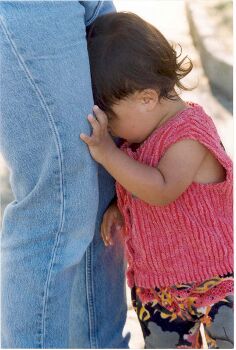At around 7 to 8 months, most children begin to show fearfulness around unfamiliar people. This is called stranger anxiety and is a normal reaction that tends to increase over the next several months. Children may appear to tense up, cling to their parents, or try to hide from a new person. Many researchers believe that stranger anxiety grows as children get better at remembering familiar faces and identifying unfamiliar faces. Researchers have found that when strangers approach more slowly or don’t reach out to touch a baby too quickly, stranger anxiety can be reduced. Some children experience higher levels of stranger anxiety than others.
References:
Sroufe, L. A. (1977). Wariness of strangers and the study of infants. Child Development, 48, 1184

